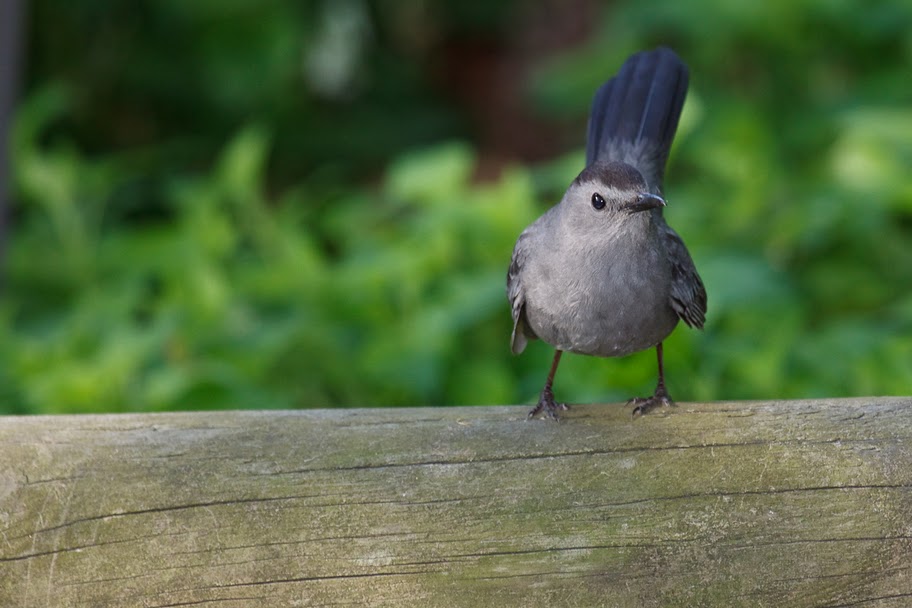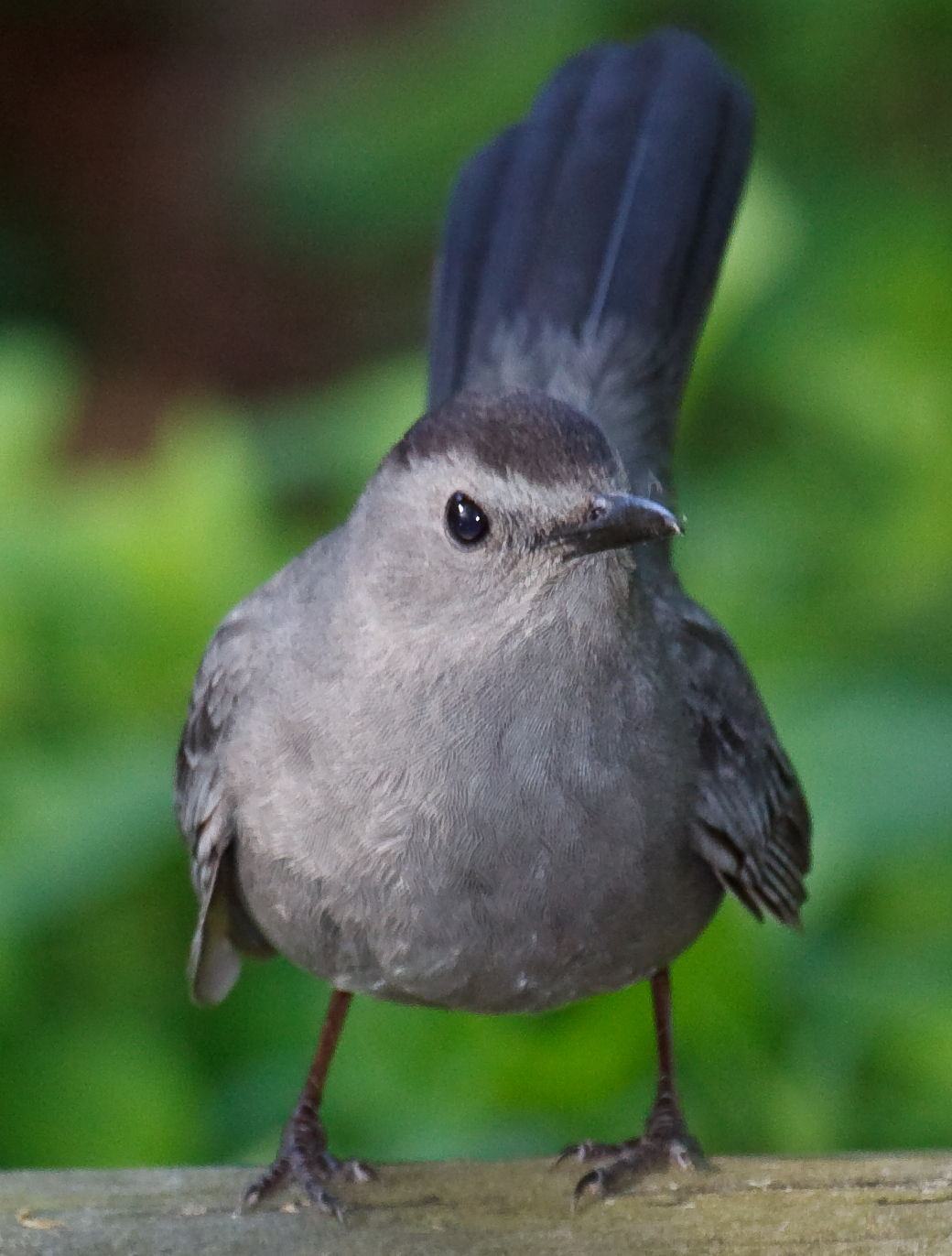Does Image Stabilization Help?
My friend Steve Nanz is of the opinion that in 2010 I shouldn’t even consider a lens that doesn’t have image stabilization. He suggested that I might want to try Canon’s 100-400 mm f/5.6L zoom lens instead of the 400mm f/5.6L prime that I have been using. I actually did test the 100-400 mm f/5.6 L lens rather thoroughly while I was shopping for lenses last year and earlier this year. It’s a good lens to be sure, but I just found that I got better results of the prime lens. Still Steve is a better photographer than I am so I thought I’d give it one more try. Here’s what I found:

The image stabilization on the zoom lens definitely improves the pictures in lowlight. For full frame photographs, I was able to get plausible pictures as low as the 30th of a second, way slower than anything I can do with my non-stabilized lens. The Gray Catbird above was at 1/50s. No way I could have handheld the 400mm prime still enough for that shot. However, there was noticeably more noise in these conditions, and for anything other than a full frame photograph the pictures were better than I get with my non-image stabilized prime but not good enough. If I crop in on the bird and show the image at one to one some blurring becomes apparent, even after sharpening:

The bottom line seems to be that with my camera I need enough light to shoot at 1/400 of a second or faster. The image stabilized pictures at 1/200th of a second are much, much better than the nonimage stabilized pictures of similar speed, but they’re still not keepers (at least for common birds. For life birds my standards are much lower as anyone who read about my recent trip to Puerto Rico can tell you). The image stabilization takes the pictures from incredibly blurry to a little blurry and a little noisy, but they’re not what anyone would call sharp.
I suspect Steve may see different results because he’s shooting with a different camera. He tends to use full frame and 1.3 crop factor bodies. These cameras have larger pixels than my 50D does, so they’re less sensitive to noise. Also, because the 50D pixels are smaller, they put stronger demands on the lenses. Smaller pixels are more sensitive to a less than perfectly sharp lens. In general, prime lenses are sharper than zoom lenses. The 100 to 400 mm zoom is a sharp lens, but it just isn’t as sharp as the 400mm prime. Steve also tends to shoot with an effective 800mm. (400mm f/2.8 prime with a 2X teleconverter.) That makes his pictures 4 times as large as mine so he doesn’t have to crop as much. That goes a long way toward canceling out some noise and making his pictures overall sharper. There’s no question that he gets better shots this way, but he’s also lugging a lot more weight into the field than I do.
Not that the zoom lens doesn’t have some clear advantages over the prime. First of all, there’s the zoom factor. It’s easier to find the bird at 100 mm and then zoom in on it than to find it and shoot it at 400mm with a very narrow field of view. Furthermore, with large birds like swans, or with tame birds at feeders, sometimes 400 mm is too long. I was shooting catbirds yesterday with the lens as short as 150mm. Also, the 100 to 400 mm zoom has 1.8m close focus, almost twice as close as 3.5m close focus on the 400mm prime lens. That’s a huge improvement for butterflies, dragonflies, and similar large insects.
I’ve only done some basic testing so far. Tomorrow I may actually try to take both lenses out into the field at the same time and shoot with both. And if Canon released a 400mm f/5.6 prime with their four stop Image Stabilizer (something that’s been rumored repeatedly over the last few years, though that mostly seems to be wishful thinking) I’d be first in line to buy it. (The 400mm f/4 DO is a little heavy and a lot out of my price range.) However, the bottom line is that I don’t feel like I made the wrong purchase decision, and I’m not running out tomorrow to buy a 100 to 400 mm zoom. The 100-400’s image stabilization improved some pictures at slower shutter speeds but it doesn’t change them from throwaways to keepers.
